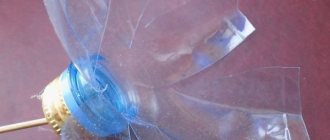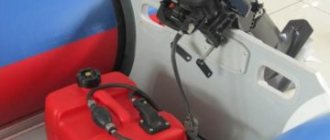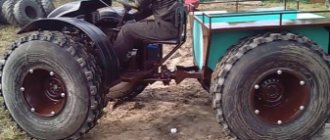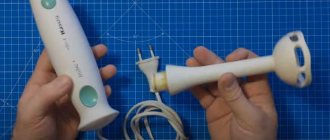How to assemble a fan yourself? This question is especially relevant in the warm season, when it is unbearably hot outside, and there is no possibility or point in purchasing an air conditioner or split system. It arises due to the fact that the instructions do not clearly describe the process of assembling the product or there are parts that at first glance are superfluous or are installed in an unknown location. Anyone, even someone far from technology, can solve this simple problem. The work will not take much time, and the result will be long-awaited coolness.
How to make a snail fan with your own hands?
A snail fan is what radial or centrifugal fans are commonly called.
They are widely used in industry or in large ventilation systems that require a sufficiently high energy airflow to overcome the resistance of the air ducts.
In most cases, industrial fan models are used, but if necessary, you can make a “snail” fan with your own hands.
Device and design
Radial fans move air flows using an impeller installed inside a housing of a specific shape.
The name “snail” arose due to some similarity in the appearance of the body with a spiral-shaped shell. The impeller has the form of a drum equipped with blades located parallel to the axis of rotation.
The operation of the device occurs in close interaction between the housing and the impeller, the functions of which are equally important.
Suction occurs in the direction of the axis of rotation, and discharge occurs tangentially to it, perpendicular to the suction . As the blades rotate, they capture air particles and forcefully throw them out in a centrifugal direction.
The fan housing does not allow the flow to dissipate, directing it to the outlet.
A vacuum is formed in the area of the central part of the impeller, which is immediately replenished by inflow from the inlet located in the central part of the flat side of the housing.
Peculiarities
The specificity of the operation of centrifugal fans is the ability to reverse the air stream when changing the direction of rotation of the impeller.
At the same time, there is practically no difference in pressure; there are only slight differences in parameters due to the use of the reverse sides of the blades.
This allows you to install the fan in different parts of the air duct system and provide certain operating modes of the system.
The design of the cochlea fan is quite simple. An impeller is mounted on the drive shaft, rotating inside the housing.
There are design options where the impeller does not have its own shaft and is mounted directly on the electric motor shaft. This is typical for small fans.
The value is determined by the fan number, which indicates the diameter of the impeller in dm. For example, radial fan No. 4 has an impeller with a diameter of 40 cm.
Impellers, blades
The impeller (impeller) consists of blades that act on certain areas of the air flow and a carousel-type support structure.
There are two types:
- drum type impeller . Outwardly it resembles a squirrel wheel. Used in fans that move a gas-air environment with normal requirements - temperatures up to 80°, no aggressive, flammable, sticky or fibrous inclusions. Fits most fans
- open impeller . It is used much less frequently, since a design of this type is less resistant to mechanical stress. Most manufacturers make such impellers only to order. Used for work as dust devices working with complex materials with fibrous inclusions
The air flow moves through contact with the impeller blades. When rotating, the planes of the blades act on a certain volume of air with which they are in direct contact, compact it and impart a corresponding impulse.
The operational parameters of centrifugal fans are determined by the dimensions of the impeller , its diameter and width, the size of the blade area, and their number. The larger the diameter, the higher the linear flow velocity and the greater its energy.
Accordingly, the pressure and performance of the fan increases. At the same time, the aerodynamic resistance of the installation increases significantly, which creates a strong load on the electric motor.
Increasing the diameter allows you to obtain high pressure, and increasing the width of the impeller (drum height) increases productivity.
https://www.youtube.com/watch?v=gHEHem-cY3I
The impeller blades have a slightly curved hollow shape. There are wheels with blades curved forward and backward .
If there is a tilt in the direction of rotation (forward), a more powerful impulse of air flow appears, but if there is insufficient power to the installation (for example, if the inlet pipe is not able to provide a sufficient supply), the fan begins to “choke.”
Blades curved back provide a slightly smaller impulse , but allow you to obtain a smooth and stable operating mode without failures or breakdowns.
Self-production
Let's consider how you can create a snail fan with your own hands, the drawings of which can be found on the Internet or made yourself.
Working wheel
First of all, you need to get an impeller. This is important because it is a fairly massive element and requires good balancing .
If the impeller beats even a little, the bearings of the electric motor (or its own drive shaft) will quickly fail.
Ready-made impellers from fans or air conditioners are often used, but if you can’t find them, you’ll have to make them yourself.
Landing sleeve
First of all, you need to make a landing coupling. It is made on a lathe . The coupling is then attached to the sheet metal by welding or screws, clamped in a lathe and carefully centered.
The result is a round disk with a seating sleeve in the center. Markings are made on it and the blades are attached.
Making a drum-type impeller with your own hands is impractical, since high-quality balancing of homemade elements is impossible.
Aspiration and ventilation of a woodworking workshop
Frame
For the body, sheet steel or, as in the example in the video, wood is used. A strip 0.5-1 cm wider than the thickness of the impeller is cut out of it. The strip is bent, giving it the shape of a snail. This is the side of the body. Then two identical parts are made, repeating the profile of the side element.
One of the parts will become the outer side of the housing; a suction hole is made and a flange is secured for mounting air ducts or grilles.
The second part is attached to the motor housing and has a hole for the passage of its shaft. It is secured to the engine with bolts , the side curved part is welded to it with a continuous seam without gaps.
Bolts are welded to the edge, which will press the outer part with the suction hole.
Assembly
Making a fan yourself is quite a difficult task, since it is necessary to make curved parts. Poor assembly, errors in the shape of elements, and imbalance of the impeller are common shortcomings of homemade fans.
In addition, all homemade products make a lot of noise during operation, and it is extremely rare to get rid of this. It is pointless to take on manufacturing without having plumbing skills, the ability to weld sheet steel with high quality and perform other work. The price of a finished fan is not so high that it wastes time, materials and equipment.
Review and comparison of production models
Ready-made fans have stable and stable performance characteristics and provide high-quality operation with low noise levels.
If you have an extensive system of air ducts that distribute sound throughout all rooms, the use of low-noise equipment is very important.
Let's consider the performance characteristics of several industrial designs in order to know what to start from when designing your own product:
Low pressure radial fans BP 80-75
They have a fairly high productivity (from 370 to 71000 m3/h depending on the fan number). The pressure is in the range of 0.37-1820 Pa. They are used in general ventilation systems or as part of process equipment.
Medium pressure radial fans VTs 14-46
The pressure indicator for this model range is increased, as is the productivity, reaching up to 127,000 m3/h for large numbers. Such installations are used in large branched ventilation systems with a long length of air ducts.
Dust fans VCP 7-40
They are used as part of the technological cycle to move fine bulk materials. They are used for transporting grain, cereals, and for removing sawdust or shavings. The peculiarity of this group is the design of the impeller, which has a small number of blades. This eliminates the risk of material getting stuck between the impeller elements.
Centrifugal fan 220 V
Fan based on a plastic bottle
What our craftsmen don’t do from plastic bottles! The time has come to say that they also make a very good fan. It may not ventilate your entire room, but it will definitely help those who have to work at a computer.
We offer two options for creating such a fan model.
Option #1 - hard plastic model
To complete the work we will need:
- plastic bottle with a capacity of 1.5 liters;
- a motor from an old toy;
- small switch;
- Duracell battery;
- marker;
- scissors;
- candle;
- hammer and nail;
- Styrofoam;
- hot glue gun.
So, we take an ordinary 1.5 liter plastic bottle with a stopper. At the level of the label line, cut off its upper part. This is exactly what we need to make the propeller. We divide the surface of the plastic blank into six parts.
We try to mark it out so that we get equal sectors: the quality of operation of the future device depends on this.
We cut the workpiece along the markings almost to the neck. We bend the blades of the future propeller and cut off every second of them. We are left with a blank with three blades equidistant from each other. The edges of each blade must be rounded. We do this carefully.
To remove those parts of the blades that are closer to the neck of the workpiece, it is better to use a utility knife; do not forget to round the edges of the blades
Now we will need a small candle. Let's light it up. We heat each blade at the base on it to turn it in the direction we need. All blades must be turned in the same direction. Remove the lid from the workpiece and punch a hole in the very center using a nail and hammer.
We place the plug on the rod of a small motor. Such motors can remain from old children's toys. As a rule, getting them is not difficult. Secure the cork with glue.
Now you need to make a base on which the motor will rest. For this purpose, we take, for example, a piece of polystyrene foam. We attach a rectangle to it, which can also be cut out of foam packaging.
Our motor, to which the propeller is attached, will be fixed on the upper surface of this rectangle. To do this, you need to make a recess in the foam that corresponds to the parameters of the motor.
Hot melt adhesive is used to secure the elements of the product. If it is unavailable, other adhesives can be used. It is important that the fastening itself is as reliable as possible.
Polystyrene foam is a convenient material for constructing a fan stand, because it is easy to give it the desired shape, but it is better to make the base of the stand heavier.
A small switch and a power supply, the role of which is played by a rectangular Duracell battery, are attached to a foam stand. We assemble the simplest chain, trying to do everything as carefully as possible.
All we have to do is screw the propeller onto the plug fixed on the motor. Our fan is completely ready for operation.
The foam stand probably weighs too little to give the device the necessary stability. After all, with a sufficient span of blades, it can turn out to be quite powerful. Therefore, it is advisable to make the base of the model heavier.
Option #2 - soft polymer product
Let's prepare in advance everything that we will need during the work:
- two bottles of SevenUp lemonade;
- electric motor 12 V DC;
- seven thick straws for drinks;
- connector for power supply;
- the power supply itself;
- switch;
- scissors and utility knife;
- marker;
- hot glue gun;
- Super glue;
- plastic ties;
- wire cutters;
- soldering iron;
- insulating tape;
- CD disk.
So, there is another option for building a homemade fan from a plastic bottle. Let's take a bottle of smaller capacity, for example, SevenUp lemonade.
The algorithm for cutting the blades of the future propeller is the same as in the previous version. The plastic of this bottle is much softer, so you can give the desired slope to future blades without resorting to heating them.
A hole in the center of the cork should be made using an awl or nail heated over a fire for this purpose. The 12 V DC electric motor, on the shaft of which the propeller will be attached, can be taken from old toys or a hairdryer that is unnecessary in the household.
The cover is fixed to the shaft using hot melt adhesive. We immediately screw the light propeller to the lid.
When talking about this option for constructing a fan, we mentioned seven tubes, but if the tubes you have have a smaller diameter, you will need more of them: you need them to fit tightly into the neck of the lower workpiece
The most interesting thing is the construction of the stand. It turns out to be not only stable, but also attractive. To create it you will need seven thick drinking straws. It is necessary to glue them together with superglue. It turns out to be quite a strong and attractive stand.
For the base, take the top part of a plastic bottle larger than the one from which we made the propeller. We push the stand of tubes into the neck of the workpiece, approximately to the middle of its length. We fix the stand in this position using superglue applied to the neck of the workpiece.
Now you can install the engine on the rack, securing it with hot glue. The fact that the stand itself is made of hollow tubes helps hide the wires nicely. We simply pass them through the central tube. This way the wires end up inside the base of the device.
To further strengthen the structure, you should use plastic ties, which are glued with hot glue to the stand on the sides of the motor so that the tie lock is tightened over the motor itself, ensuring its immobility. The excess tip of the fastener is removed with pliers.
In the plastic surface of the bottle, which serves as the base of the structure, holes are cut for the power supply connector and switch. It is better to do this with a utility knife.
We connect the connector for the power supply and the switch. The wires should be soldered and insulated. The switch and connector are fixed to the plastic with hot glue.
The CD disk, which becomes the bottom for the base of the future fan, is not only the finishing touch of the work, but also makes the product more stable
To make the base heavier and more stable, we will build a bottom for it from a CD.
To do this, lubricate the edges of the plastic blank with hot glue and press the disk against it.
The motor is connected to the power supply via a connector, and the device itself is turned on using the red button located on the left
Now we connect power through the connector. For this purpose, you can use a power supply for LED strips, which is sold in electrical appliance stores. Well, this homemade product is ready to go.
To make sure that you correctly understand the sequence of work performed, watch the video at the end of this article.
How to make a snail fan with your own hands - Metals, equipment, instructions
Creating high-density airflow is possible in several ways. One of the effective ones is a radial type fan or “snail”. It differs from others not only in shape, but also in its operating principle.
Fan device and design
Radial fan operation diagram
Sometimes an impeller and a power unit are not enough to move air. In conditions of limited space, a special type of exhaust equipment design should be used. It has a spiral-shaped body that acts as an air channel. You can make it yourself or purchase a ready-made model.
To form the flow, the design includes a radial impeller. It connects to the power unit. The wheel blades have a curved shape and create a discharged area when moving. Air (or gas) enters it from the inlet pipe. When moving along the spiral body, the speed at the outlet increases.
Depending on the application, the centrifugal fan volute can be general purpose, heat-resistant or corrosion-resistant. It is also necessary to take into account the amount of air flow created:
- low pressure. Area of application: production workshops, household appliances. The air temperature should not exceed +80°C. Mandatory absence of aggressive environments;
- average pressure value. It is part of exhaust equipment for removing or transporting small fraction materials, sawdust, grain;
- high pressure. Forms an air flow into the fuel combustion zone. Installed in many types of boilers.
The direction of movement of the blades is determined by the design, and, in particular, by the location of the outlet pipe. If it is located on the left side, the rotor should rotate clockwise. The number of blades and their curvature are also taken into account.
For powerful models, you need to make a reliable base with your own hands to secure the body. The industrial installation will vibrate strongly, which may lead to its gradual destruction.
Review and comparison of production ready models
When considering a radial volute fan, you need to take into account the material of manufacture: cast aluminum housing, sheet or stainless steel. A model is selected based on specific needs; consider an example of serial models in a cast case.
| Series | Power consumption, kW | Productivity, m3/min | Pressure, Pa |
| ND (low pressure) | from 0.03 to 7.5 | from 3.2 to 95 | from 330 to 1900 |
| RD (average pressure) | from 0.04 to 22 | from 2.7 to 125 | from 650 to 9600 |
| HRD (high pressure) | from 0.55 to 22 | from 7.8 to 96 | from 2600 to 16400 |
| HRD-FU/FUK (frequency converter) | from 0.75 to 20 | from 7.7 to 97 | from 4900 to 20000 |
| FD RDF (conveyor) | from 0.25 to 11 | from 10.5 to 64 | from 1100 to 6800 |
| SVD (special) | from 0.6 to 4 | from 23 to 71 | from 1200 to 2600 |
ND Series RD Series HRD Series HRD-FU/FUK Series FD RDF Series SVD Series
How to make a snail fan with your own hands?
- Drawing
- Low pressure radial fans BP 80-75
Do-it-yourself centrifugal fan snail
A snail fan is one of the most popular devices that are used to create air flow with high densities. This hood has its own characteristics, design nuances and operating principle that distinguishes the snail from other systems.
Snail fan photo
Before you assemble a highly efficient snail fan with your own hands, you should learn about the features of this device and its design.
- To carry out forced air movement, sometimes you can get by with an impeller and a power unit that will rotate the working element;
- If space is limited, but an exhaust unit is absolutely necessary, specialized equipment comes to the rescue;
- The cochlea is a body made in the form of a spiral;
- The mission of the corps is to carry out the tasks of the air channel;
- Do-it-yourself snails are quite popular, but when there is no time to assemble or lack the appropriate skills, the objectively best solution would be to purchase ready-made equipment;
- To create an air flow, a radial component - a wheel - is located inside the fan structure;
- This radial piece of equipment connects to the power plant;
- The blades on the impeller are curved, which allows them to create a discharged area when they move;
- The inlet pipe of the structure serves to supply air or another medium;
- Due to the movement along the spiral casing, the speed of air exiting through the outlet opening increases noticeably;
- Coil fans come in heat-resistant, corrosion-resistant and general purpose;
- The movement of the volute fan blades depends on the design of the equipment. Particular attention should be paid to the location of the outlet pipe. If it is on the left, then the rotor should rotate clockwise, or vice versa;
- When choosing or assembling a snail with your own hands, you need to take into account how many blades are used and what their curvature is.
Created air flows
Photo of industrial fan snail
When planning to assemble a homemade unit with your own hands or buy a ready-made snail-type exhaust apparatus, you should definitely take into account the characteristics of the air flows created. Namely, you should be interested in the flow value, on which the scope of application of the snail largely depends.
- Low pressure. Low-pressure air flows are widely used in equipping production workshops and assembling household appliances. The air temperature here is not allowed to exceed 80 degrees Celsius. Also, low-pressure snails are not adapted to work in aggressive environments.
- Average pressure. Medium-pressure scroll fans are most often found in the design of an exhaust system used for transportation and removal of fine materials. A striking example is grain and sawdust removal.
- High pressure. High-pressure volute hoods form air flows that flow to the combustion zones of various types of fuel. Boiler equipment operating on different types of fuel is equipped with high-pressure volutes.
A volute, or centrifugal fan, requires a reliable base.
The housing must be properly fixed so as not to create vibration. Industrial units are characterized by increased vibration.
If this phenomenon is not prevented, the device will gradually fail.
Do it yourself
Building a scroll fan is not the most difficult thing if you decide to take on a homemade unit with your own hands.
There are several important recommendations that you should consider before building your own snail fan.
- Functional purpose. To equip a part of a room, a small area or equipment with a ventilation system, the housing can be assembled from scrap materials. If this is a centrifugal unit that will generate air flows to ensure the operation of boiler equipment, then the housing is made by hand using stainless steel or heat-resistant metal.
- Power. This parameter directly depends on the functions that the centrifugal unit will perform. Many home craftsmen use snails removed from old equipment, ventilation systems, hoods or vacuum cleaners. By using such a unit, you guarantee an exact balance between power and body characteristics.
If you want to make a snail for domestic use or for use inside a workshop, then you can assemble the device yourself. All other situations imply the need to use only factory-proven, proven snails.
To assemble an effective homemade snail fan with your own hands, you will need to complete the following tasks:
- Calculate the dimensions of future equipment. If this is a centrifugal unit for installation in a confined space, be sure to use damper pads. They will compensate for the vibrations generated during its operation and protect the volute from premature wear. If this is a large stationary unit, vibration protection occurs due to the weight of the equipment and its fixation;
- Make a fan casing. If you do not have a ready-made box that is ideal for the fan, use scrap materials. Plastic, plywood sheets, and steel are suitable for these purposes. If you decide to take sheets of plywood, make sure that during the process of assembling the structure there are absolutely no gaps and all seams are properly sealed;
- Think over the diagram of the snail's power unit. The job of the power plant is to rotate the fan blades. When choosing, consider how much power the snail has. If it is a high power centrifugal fan, use a belt drive. In small installations, it is important to use a shaft that connects the motor gearbox to the rotor;
- Use fasteners. When installing a scroll fan on the outer casing of the structure, U-shaped mounting plates are used. If the power of the units is impressive, then be sure to adopt a massive, durable base;
- Minimize noise. A high-power volute is characterized by the fact that such a centrifugal fan emits quite a lot of noise. Objectively, the best way to protect yourself from snail noise is to assemble the equipment with the highest quality possible. After assembling the cochlea, it is problematic to compensate for the noise. The noisiest models are those whose body is made of plastic and metal. Wooden cases reduce snail noise, but are significantly inferior to their metal and plastic counterparts in terms of service life.
According to the presented diagram, you can create centrifugal exhaust devices of various power purposes with your own hands. If necessary, you can make changes to the circuit, change components, add auxiliary elements.
The most significant point when assembling a fan with your own hands is the reliable sealing of all seams in the structure and the protection of the engine itself.
Over time and with use, an engine that does not have proper protection can become exposed to various debris, dust, dirt and moisture.
It is no secret that this leads to wear, gradual destruction and failure of equipment.
articles - material rating: 3.67 out of 5
Varieties of Snail Fans
Snail fans get their name from the shape of the body, which resembles the shell of this mollusk.
Today this type of equipment is used both in industry and in residential construction in ventilation systems. Manufacturers today offer several models of snails for ventilation.
But they all work on the same principle - the centrifugal force created by the rotation of the blades on the rotor captures air through a snail-shaped inlet and pushes it through a straight outlet located at 90° in a different plane to the inlet.
General information about centrifugal (radial) fans
Coil fans have a dual designation (marking): VR and VC, that is, radial and centrifugal.
The first indicates that the blades of the working part of the equipment are located radially relative to their rotor.
The second is the designation of the physical principle of operation of the device, that is, the process of intake and movement of air masses occurs due to centrifugal force.
It is centrifugal fans in ventilation systems that have shown themselves on the positive side due to the high efficiency of air removal.
Operating principle
As already mentioned, fans of this modification operate based on the action of centrifugal force.
- The blades attached to the rotor of the device rotate at high speed, creating turbulence inside the housing.
- The inlet pressure drops, which causes the suction of nearby air, which rushes inward.
- Under the action of the blades, it is thrown to the periphery of the space, where high pressure is created.
- Under its action, the air flow rushes to the outlet pipe.
This is how all centrifugal models work, which are installed not only in ventilation systems, but also in smoke removal systems.
About the latter, it must be said that their body is made of aluminum alloy or steel, coated with heat-resistant materials, and is equipped with an explosion-proof electric motor.
Design Features
As already mentioned, the main design feature is the snail. It is also necessary to indicate the shape of the blades. Fans of this brand use three types:
- with straight slope,
- with a backward tilt
- in the form of a wing.
DIY centrifugal fan
A low-power centrifugal fan will be of little use. Even quiet hoods are equipped with commutator motors that make a lot of noise. If the fact doesn’t frighten you, let’s proceed to choosing funds.
We'll show you how to make a centrifugal fan with your own hands from scrap items. If in a typical axial fan the motor and impeller are important, here, in addition to everything else, the housing is added.
Let's try to assemble a centrifugal fan ourselves.
What is a centrifugal fan
A centrifugal fan is used as a duct fan. To make things easier, the vacuum cleaner contains what looks like a duct fan. Now think:
- The dust is sucked up by a hose.
- Passes into the bag (tank, compartment).
- Passes filtration.
- The engine passes.
- It is ejected from the back of the case.
What it does is that there is a centrifugal fan inside, formed by a drum (squirrel cage) mounted on the motor shaft. This is not enough. The engine with the impeller is enclosed in a sealed housing, through the channels of which the air escapes to the outside.
Without a tight casing, the meaning of the centrifugal fan will be lost. Here's the main difference. Unlike axial fans, which often serve for personal needs, centrifugal fans are used in the economic sphere: room ventilation, cleaning, air purification.
To understand how to make a centrifugal fan, let's study the principle of operation of the device.
Operating principle of a centrifugal fan
A centrifugal fan operates due to the dynamic characteristics of the flow. Try tying a stone to a thread and twisting it around yourself in a horizontal plane.
The hand feels a noticeable tension; if the connection were broken, the projectile would immediately fly out tangentially to the circular path of rotation. Air molecules behave similarly: the wheels on the blades acquire significant speed and, unrestrained by anything, are carried away to the outer perimeter.
Then the channel system gives the flow the desired direction. Finally, air enters centrally, usually on the side opposite the engine.
Inside the vacuum cleaner we see a picture:
- Air from the bag (tank, container), cleaned of dust, approaches the engine from the front and enters the center of the drum.
- The molecules, accelerated by the blades to a significant speed, are thrown out. They pass through the channels of the sealed housing, simultaneously cooling the engine, and leave the belly of the vacuum cleaner from the back side.
Design feature: the blades of a centrifugal fan create pressure; if the housing is leaky, the air flow will be disrupted. Therefore, the difficulty for a self-taught master is to create the right conditions.
Good hoods use motors with tangential (centrifugal) type fans. In selected designs, the design surprises with a duet of squirrel cages. In the latter case, a pair of impellers is mounted on either side of the engine on a shaft. Then the air enters from two directions perpendicular to the plane of rotation of the wheels. Thus, the efficiency of the centrifugal fan increases.
How to make a centrifugal fan
From what has been said, the obvious way to achieve this is to remove the tangential fan from the hood, for example. Advantage: Silent operation is ensured. The manufacturer complies with the norms prescribed by the standards, so factory-made devices of the hood class are relatively quiet. We believe that for most readers this is not the best solution to the problem, let’s continue our consideration.
Vacuum cleaner
Inside the vacuum cleaner there is a ready-made centrifugal fan. A big plus is that there is already a ready-made housing that needs to be mounted in the channel on site. Additional benefits include:
- The vacuum cleaner engine is designed for long-term operation. Spins the blade for days on end. The windings are often protected from overheating; in addition, air passes through the channels, cooling the stator.
- The vacuum cleaner engine is designed to overcome significant pneumatic loads. When you disassemble this housewife's assistant yourself, you will see a safety valve inside. Try removing it and blowing it out with your lungs. Does not work? And the engine does this in jest! Pinch the inlet or bend the hose in half. A click coming from the inside of the case indicates activation. We believe that such a force will be more than enough to ventilate the facility.
- Plus - the suction power (in aerowatts) is indicated in the technical specifications, similar to the pressure created. Thus, it is easy to calculate in advance using formulas whether the engine power is sufficient for the selected task. Sometimes manufacturers are so kind that they indicate the flow rate, for example, 3 cubic meters per minute. Anyone can do the math: 180 cubic meters per hour. Thanks to the high power, the flow rate will be maintained despite the turns and bends of the air duct.
The disadvantage of the vacuum cleaner engine is noise. In addition, the commutator motor sparks, which creates interference along the power supply. You will need to make a surge protector so as not to burn out your imported home equipment. The noise level is high. Exceeds 63 dB allowed to be produced in an apartment by law.
Washing machine
What else can you use to assemble a centrifugal fan? The image of a front-loading washing machine came to mind. If you remove the door and make channels in the housing so that the flow cools the motor windings, you will get a centrifugal fan.
Plus - the working compartment of the washing machine is sealed. Simply remove the tank wall near the engine to create something like a centrifugal fan. The drum will have to be radically redesigned to capture air.
The housing will need to be disassembled.
The main dilemma arises: is it worth dismantling the tank? Most models are specially designed so that the operation cannot be performed without damaging the fasteners. This helps service centers track the sly ones doing the repairs.
In any case, the drum is cut in place to make blades in the walls. Bend the steel inward so that the structure does not touch the tank.
Option: from the walls of a steel cylinder, and bend the blades of the desired shape in the image and likeness of factory industrial models of centrifugal fans.
The main thing seems to be the correct selection of speed. 1000 spin rotations is quite enough. The drum diameter is large. The vacuum cleaner produces 6000-16000 rpm, but the radius of the blades is much smaller. Therefore, it is necessary to estimate the linear speed.
As you know, the circumference is directly proportional to the radius, therefore, if the diameter of the drum of a Samsung washing machine is 45 cm, it is at least three times larger than that of a vacuum cleaner - equivalent to a speed of 3000 revolutions per minute (minimum).
But! In this case, the wheel area is much larger, therefore, the flow is enormous.
From the above, we conclude that a speed of 1000 rpm, especially 1500 rpm, is enough to independently make a centrifugal fan from a washing machine. The performance is approximately the same, but the specific flow pressure will be reduced.
Much depends on the shape of the blades; we strongly recommend that you inquire on the forum of physicists and hydraulics. The simplest option is to borrow a blade from a floor fan.
The plastic is welded using a set of plastic bags and a soldering iron, which will strengthen the flywheel on the shaft.
The main thing is to maintain tightness. It is recommended to seal the extra holes that abound in the drum.
A homemade centrifugal fan from a washing machine is dangerous to operate (if there are safe tangential fans), it is recommended to close the hatch for loading laundry with a strong grille.
For example, make a number of holes on the front side of the case for installing the element. The centrifugal fan device is complemented by a durable fence. Make the grate from a steel rod and fasten it with bolts.
Adjusting the centrifugal fan motor
In 85% of cases, the motor in a washing machine is a commutator motor. These, by the way, also operate on direct current. The direction of rotation is determined by the polarity of the voltage.
About the speed control scheme. The operating principle of a centrifugal fan requires the use of spin modes. Find the thyristor circuit that regulates the cutoff angle and adjust it as needed. For maximum speed, connect the engine to a 220 V network. We consider the questions of what a centrifugal fan is and how to make one to be answered.
Floor fan motor
Inside the fan there is an asynchronous motor with regulation of the shaft rotation speed by switching the windings. A capacitor is attached to the gearbox. The radio element is not a trigger element. We believe that it is not for nothing that the windings are fastened four in two rows, shifted relative to each other by an eighth of a turn. Field rotation uses voltage phase and 90 degree shift. The equipment is useless at this point, one winding of the asynchronous motor of the floor fan will burn out, and the motor will have to be replaced. It is not possible for a beginner to wind a complex product on his own.
Speed control is performed by switching the supply voltage to the appropriate wires by switching the buttons on the stand. One core goes from the cord from the outlet to the engine, and the position of the second is selected by the operator. Only one of the speeds is pressed at a time, which is ensured by mechanical methods of blocking parallel switching. Krasnodar products are pleased with the presence of backlighting: the top button ensures that the diode lights up. Allows you to avoid collisions with a floor fan in the dark. Indirectly indicates: the manufacturer is aware of the instability of the product.











